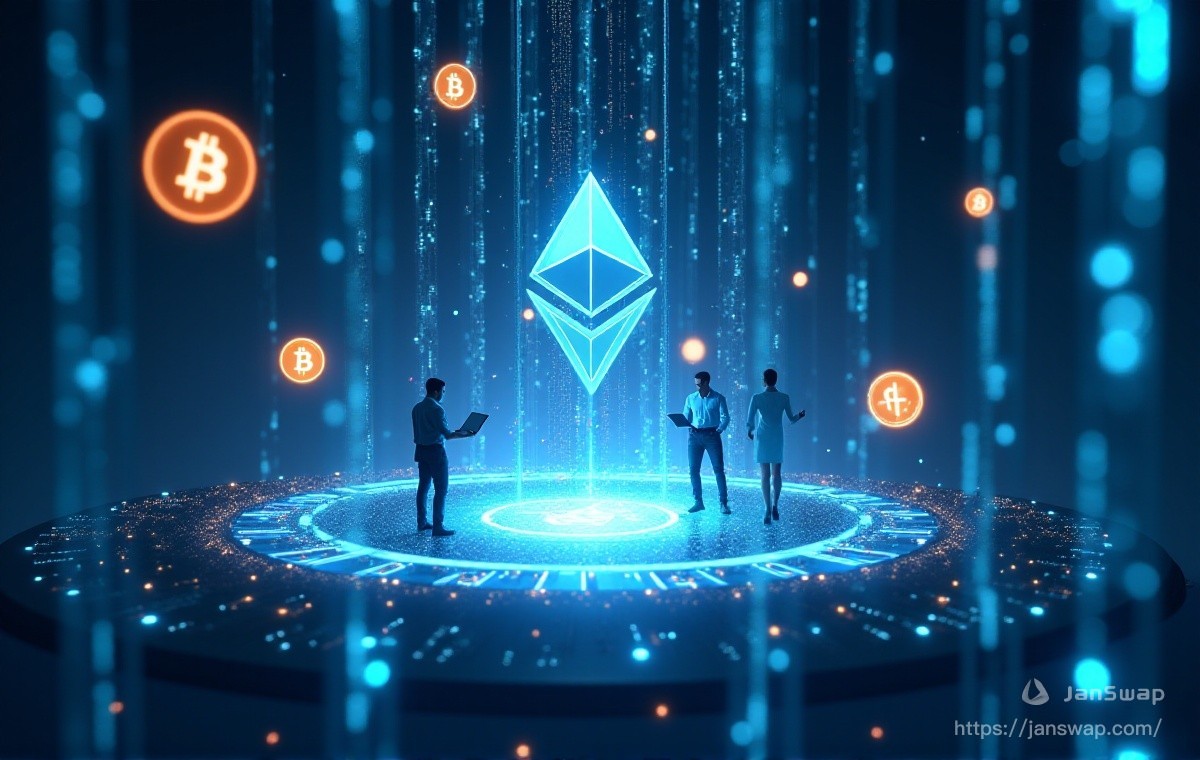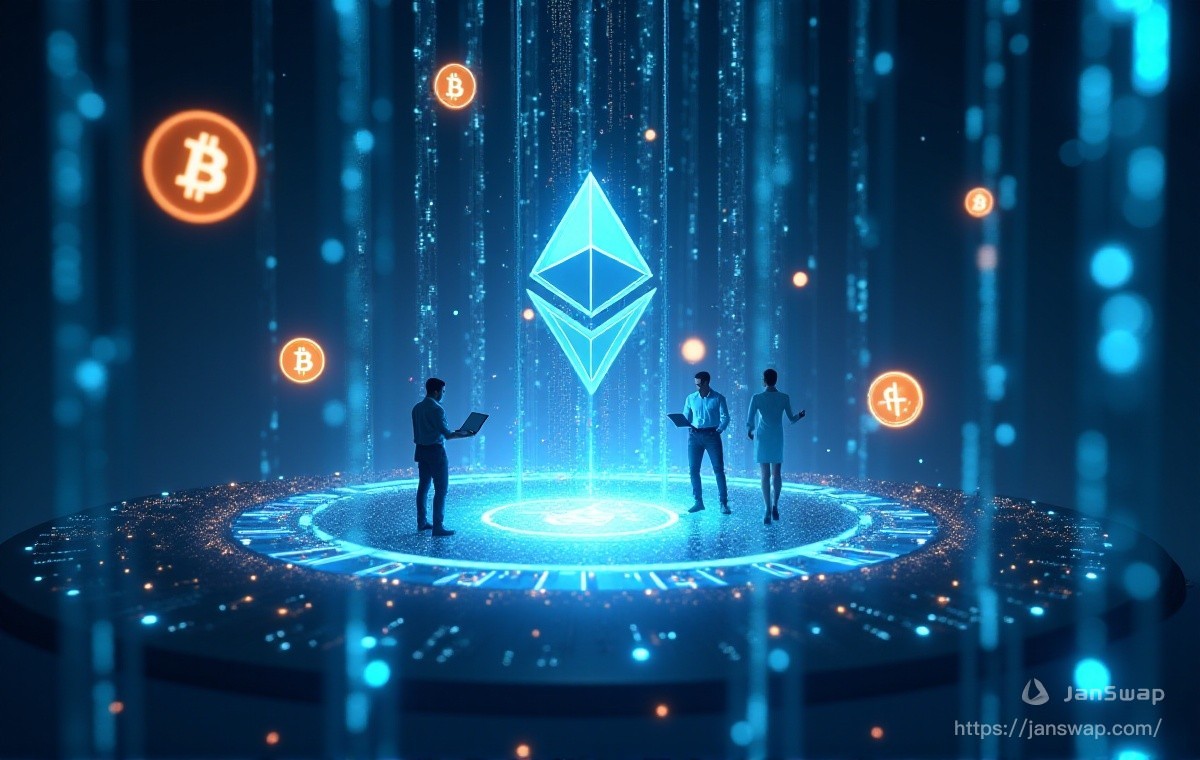

Opening Chat
Hello everyone, I'm a veteran crypto investor. Recently, I've seen many newcomers on various social platforms discussing how to make money in the crypto space. As someone who has experienced several major bull and bear cycles, today I want to talk about "smart money" in the crypto world. This topic might sound sophisticated, but it's actually very interesting and practical.
I remember when I first entered the crypto space, like many newcomers today, I would chase high prices when they went up and panic sell when they dropped, often buying high and selling low, resulting in devastating losses. Later, through observation and research, I discovered there's a group of exceptional players in the market who could always smell market trends early, completing their positions before ordinary people could react. These are the so-called "smart money."
Decoding Smart Money
When many people think of smart money, they view it as an unreachable concept, thinking it's a game played by whales with tens or hundreds of millions of dollars. However, the essence of smart money isn't about the size of funds, but rather their depth of market understanding and operational professionalism.
Let me give you a recent example. In February 2024, when Bitcoin broke through $50,000, the market was jubilant with positive news everywhere. However, at this time, on-chain data showed that some large addresses began frequently transferring Bitcoin to exchanges. As everyone saw, the market soon began to correct. This is a typical smart money move: while retail investors were dreaming of new highs, they were already preparing for the correction.
Here's another interesting example. At the end of last year, I noticed several famous crypto investment funds suddenly started accumulating large amounts of lesser-known small tokens. Many people didn't understand at the time, wondering if these funds had gone crazy buying these obscure tokens. But by early this year, these tokens' prices had increased by an average of over 5x. Later analysis revealed these projects shared common characteristics: either they had important technological breakthroughs, major partnerships about to be announced, or unique advantages in specific niches.

Strategy Revealed
So how does smart money play the market? I think there are three key points: research depth, information advantage, and risk control.
Speaking of research depth, it's truly humbling. I have a friend who works at a crypto investment fund, and their approach to project research is incredibly intense. For instance, they hire professional technical teams to audit every line of code in projects and even send people to conduct on-site inspections of project offices. Once, to research a gaming project, they organized a 20-person testing team to play the game continuously for a month, just to deeply understand the project's user experience and business model.
In terms of information gathering, smart money's advantage is even more apparent. They typically build vast information networks, including blockchain developers, investment institutions, project teams, media, and other resources. This allows them to obtain the latest and most accurate market information first. For example, when a project is about to release a major update, or when a large institution is planning to invest, they often get the news several weeks in advance.
Risk control might be the most valuable aspect for us to learn from. Smart money never puts all their chips on one project but instead makes very precise capital allocations. A trading team I know allocates their funds like this:
- 40% for long-term holding of top projects with solid fundamentals, like Bitcoin and Ethereum
- 30% for perpetual contract hedging to handle major market fluctuations
- 20% for medium to short-term investments in promising projects
- The final 10% for high-risk, high-return new projects
This allocation might seem conservative, but it's precisely this steady strategy that allows them to survive long-term in the high-risk crypto market.

Experience Sharing
After years of observation and learning, I've summarized some common strategies used by smart money to share with everyone.
First, pay special attention to on-chain data. Many newcomers might find this hard to understand, but there are now many tools to help us analyze on-chain data. For example, if you notice large holders of a token starting to transfer frequently, or a sudden significant change in the TVL of a DeFi protocol, these might indicate important market changes ahead.
In early March 2024, I observed an interesting phenomenon: several well-known crypto investment funds began heavily accumulating Layer 2 project tokens. There wasn't any particularly positive news in the market at the time, but these funds clearly foresaw important developments in Layer 2 technology. Sure enough, by late March, several major Layer 2 projects successively released important updates, and token prices rose significantly.
Let's talk about project analysis methods. Smart money particularly focuses on these aspects when researching projects:
First is technical strength. They carefully study the project's technical architecture to see if there's real innovation and if it solves actual problems. For instance, many projects in the market claim to have "revolutionary technology," but deeper research often reveals that many so-called innovations are just old wine in new bottles.
Second is team background. A reliable project usually has team members with verifiable backgrounds. If a project's team members are anonymous or have vague backgrounds, that's a red flag.
Finally, there's the tokenomics. This is particularly important as it directly relates to the token's value support. A good token economic model should balance various interests, both incentivizing early participants and ensuring the project's long-term development.

Practical Guide
After all this theory, let's look at how to actually operate. First, I suggest everyone create their own investment checklist and use it every time they consider investing in a project:
- What are the project's technical barriers? Does it truly solve real problems?
- How's the team background? Do they have relevant experience?
- Is the token economic model reasonable? How does the deflationary mechanism work?
- Who are the project's competitors? What are its competitive advantages?
- Is the current market cap reasonable? How much growth potential is there?
This checklist might seem simple, but if each item is analyzed seriously, it can filter out many problematic projects.
Let me give another practical example. The DeFi sector has been particularly hot recently, with new projects emerging constantly. But careful observation shows that projects that truly survive share several common characteristics:
First is real user demand. Whether it's lending, trading, or liquidity mining, these projects are solving actual user problems, not just issuing tokens for the sake of it.
Second is continuous innovation capability. Good project teams constantly introduce new features and optimizations rather than becoming complacent after token issuance.
Finally, healthy economic models. Project revenue sources should be diversified, not completely relying on token inflation to maintain operations.

Conclusion and Outlook
Looking back on these years in crypto, I increasingly feel that becoming smart money isn't so unreachable. The key is having patience and willingness to spend time learning and researching.
Even now, as the market begins to warm up, smart money maintains a cool head. What directions are they watching? From my observation, there are several key areas:
First are Layer 2 solutions. As main chain network congestion problems intensify, Layer 2's importance will become increasingly prominent.
Second are practical application scenarios. Especially projects that connect Web3 with the real world, such as decentralized identity verification and blockchain games.
Finally, infrastructure construction. As the industry develops, the importance of underlying infrastructure will increase.
These directions might not seem the hottest right now, but smart money often focuses on areas with long-term value rather than chasing short-term trends.
In the crypto market, what's most important isn't how much capital you have, but how high your level of understanding is. I hope through sharing this article, I can help everyone improve their investment knowledge and walk more steadily and further in this market.
Remember, in crypto, don't pursue overnight riches, but rather continuous growth and progress. Let's work together to become more professional investors.






 Français
Français Deutsch
Deutsch Русский
Русский Português
Português Español
Español Italiano
Italiano Türk
Türk
